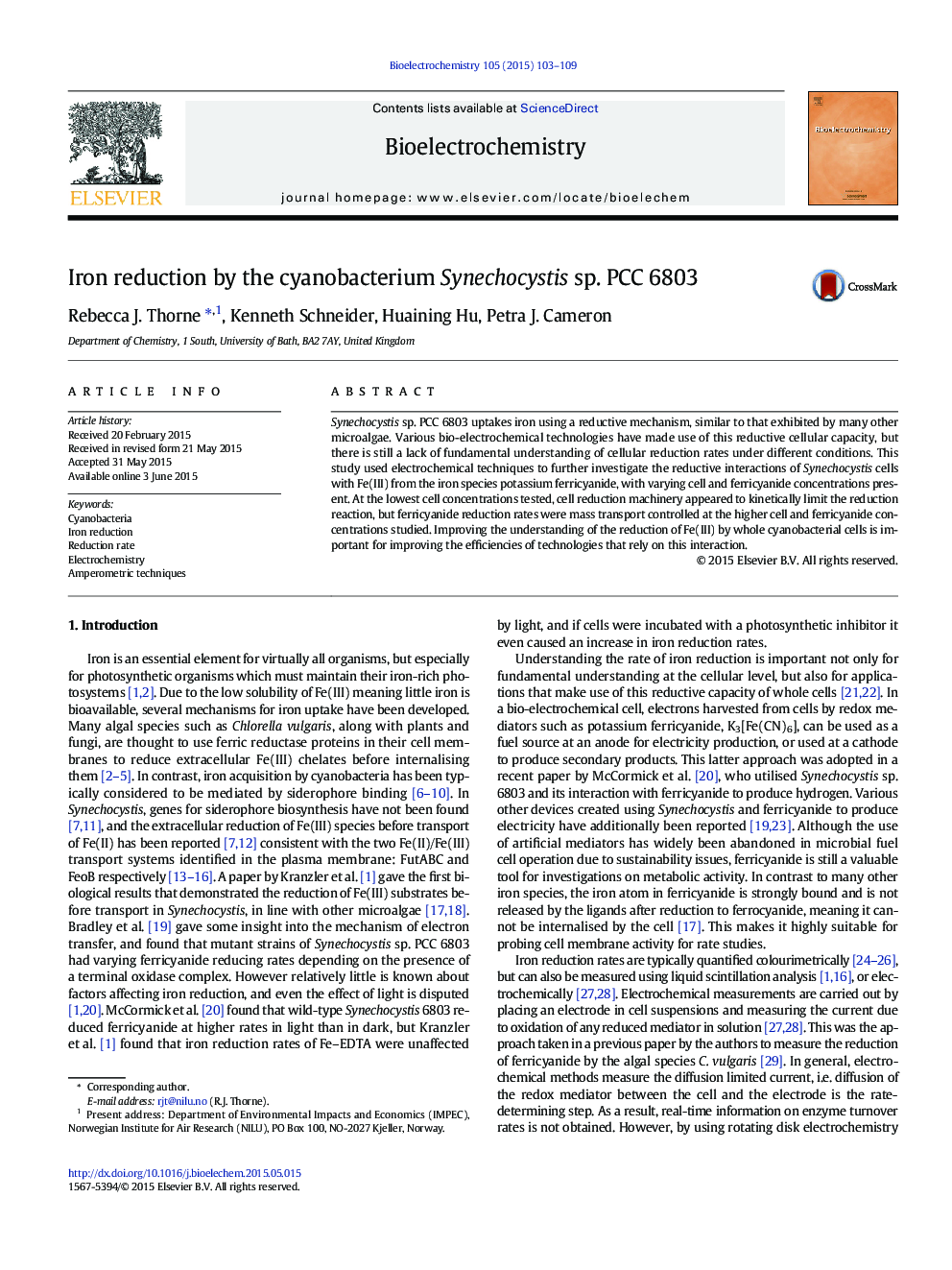| Article ID | Journal | Published Year | Pages | File Type |
|---|---|---|---|---|
| 1273905 | Bioelectrochemistry | 2015 | 7 Pages |
•We measured the reduction of Fe(III) in ferricyanide by Synechocystis using amperometric techniques.•Fe(III) reduction rates were mass transport controlled with most cell and ferricyanide concentrations tested.•At lowest cell and ferricyanide concentrations, Fe(III) reduction rates were kinetically limited, and calculated as ~ 0.9 nmol Fe(III) cm− 2 h−1 (106 cells ml− 1)− 1.•Light induced a ~ 10–20% change in current, compared to background currents in the dark.
Synechocystis sp. PCC 6803 uptakes iron using a reductive mechanism, similar to that exhibited by many other microalgae. Various bio-electrochemical technologies have made use of this reductive cellular capacity, but there is still a lack of fundamental understanding of cellular reduction rates under different conditions. This study used electrochemical techniques to further investigate the reductive interactions of Synechocystis cells with Fe(III) from the iron species potassium ferricyanide, with varying cell and ferricyanide concentrations present. At the lowest cell concentrations tested, cell reduction machinery appeared to kinetically limit the reduction reaction, but ferricyanide reduction rates were mass transport controlled at the higher cell and ferricyanide concentrations studied. Improving the understanding of the reduction of Fe(III) by whole cyanobacterial cells is important for improving the efficiencies of technologies that rely on this interaction.
Graphical abstractFigure optionsDownload full-size imageDownload as PowerPoint slide
